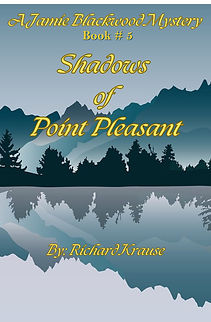The uncertainty of life...........
- Richard Krause
- Oct 5, 2018
- 4 min read
Greetings out there in internet land, first I want to apologize for missing this week. It seems that last Friday I had a Heart attack and that in turn put me in the hospital for the week. After the installation of several stints I seem to be vertical and consuming oxygen once more. The Great Architect must still have something for me to do.
So I think today we will talk about Emeralds some more. Mainly because they are my favorite stone.
Beryl
The beryl is the family of crystal that creates emeralds and aquamarines, when its color is green or blue-green, respectively. Red beryl is bixbite or red emerald or scarlet emerald, pink beryl is morganite, white beryl is goshenite, and a clear bright yellow beryl is called golden beryl. Other shades such as yellow-green for heliodor and honey yellow are common. It can also come in violet.
The earliest known source of emerald was near the Red Sea in Egypt, the so-called Cleopatra's emerald mines. They were probably worked from about 2000 B.C., apparently the location of them was lost in the middle ages, and not rediscovered until 1818. Most emeralds used in ancient jewelry are believed to have come from these mines. They are not worked nowadays because of the low quality of crystals found.
Emeralds have been found in Austria since Roman times; these are no longer commercially mined.
Columbia is generally recognized as the source of the world's finest quality emeralds, both in the past and the present. The Columbian Indians were using them before 1537, when Quesada conquered Columbia. Russia has been another important source of emeralds in the past. Emeralds were discovered in Australia in 1890 in New South Wales. Emeralds were discovered between1927 and 1929 in South Africa, followed by other sources. Another important source of superb quality emeralds, usually only of small size, is in Zimbabwe formerly Southern Rhodesia. These were discovered only in 1956. Emeralds were known in India from antiquity, but their source is not certain. The quality of Indian emeralds is very variable, but most are polished as beads. Other sources of emerald include Norway, North Carolina, Connecticut, Maine, New Hampshire, although none of these are very important. But if you’re vacationing in any of those states, we best you’ll keep your eyes peeled for any stray beryls!
Beryl colors
As much as we love diamonds, we’re also in love with colored stones and gems like aquamarines and morganite, which can range from peach to lavender in color, are becoming more and more prevalent in gemstone jewelry.
Beryl is the mineral from which emeralds are created. But beryl comes in a variety of colors, making it a versatile gem. Morganite is probably the most popular of the other beryls. It has a pastel pink to peach or lavender which is similar in intensity to the blue of aquamarine. Morganite has been marketed as "Pink Emerald" and "Pink Aquamarine" to emphasize the kinship to its popular cousins. It was first discovered in California. It was also discovered in 1908 in Madagascar. There are also deposits in Brazil, Mozambique, Namibia, Afghanistan, and Russia. However, morganite is relatively rare, which stands in the way of it becoming a jewelry stone.
Heliodor, or golden beryl, is named after the Greek words for sun - helios - and gift - doron. The sunny yellow color of this beryl lives up to its name. Heliodor was discovered in Namibia in 1910 in a pegmatite that also produced aquamarine, which is also colored by iron. Heliodor is also found in Brazil and Madagascar. The largest faceted heliodor, 2,054 carats, is on display at the Smithsonian Institution in Washington D.C.
Red beryl is the rarest member of the beryl family. It is mined in only one place: the Wah Wah Mountains in Utah. The color is stoplight red. Unfortunately this deposit produces only a small quantity of this gem. Most of the gems produced are under a carat in size, and many have inclusions. Specimens that are over a carat and clean are fantastically rare and are priced as such.
Colorless beryl, which is also known as goshenite, is also relatively rare. It is named after a deposit where it was found in Goshen, Massachusetts. The Greeks used colorless beryl as lenses; the first spectacles were probably beryl.
Gachala emerald
Emerald, the birthstone for May, is one of the world's most valued gems. Mined by the Egyptians more than 3,500 years ago for the Pharaohs, this precious green stone also has been worshipped by the ancient Incas and Aztecs, the Indian Maharajas and Maharanis, and kings, queens and other royals all over the world throughout history.
The stone is prized for its shades of green, which represent the color of life and the eternally returning spring. For this reason, emerald has held a special religious position in many cultures.
The Gachala Emerald, an uncut 5-cm stone weight 858 carats, was found in Colombia in 1967. It was given to the Smithsonian Institute in Washington, D.C., by famous New York jeweler Harry Winston.
Another huge, rare emerald is the Sacred Emerald Buddha. It resides on the grounds of the Grand Palace in Bangkok, Thailand. This venerable image was, according to historic legend, accidentally uncovered after a lightning strike on a Chedi in Northern Thailand’s Chiang Rai district in AD 1434. The temple’s resident abbot discovered stucco flaking off the image exposing a hidden green colored Buddha statute. The remaining stucco was duly removed reveling what the world now refers to as the “Emerald Buddha.”
The Mogul Emerald is one of the largest emeralds in the world. The rectangular cut tablet, which dates back to 1695, weighs 217.80 carats and is about 10 cm high. One side is inscribed with Islamic prayers and the other is engraved with opulent flower ornaments. The emerald is thought to have come from the reign of Emperor Aurangzeb --the last of the great Mogul rulers, who controlled much of India. It was discovered in Colombia by the Spanish conquistadors and most likely arrived in India through trade during the Mogul dynasty, according to experts. The emerald was auctioned off at Christie's of London for $2.2 million to an anonymous buyer in 2001.
Well I think that about covers it for today, I pray that you have a wonderful day and weekend. May the Great Architect of the Universe watch over you and keep you safe.






















Comments